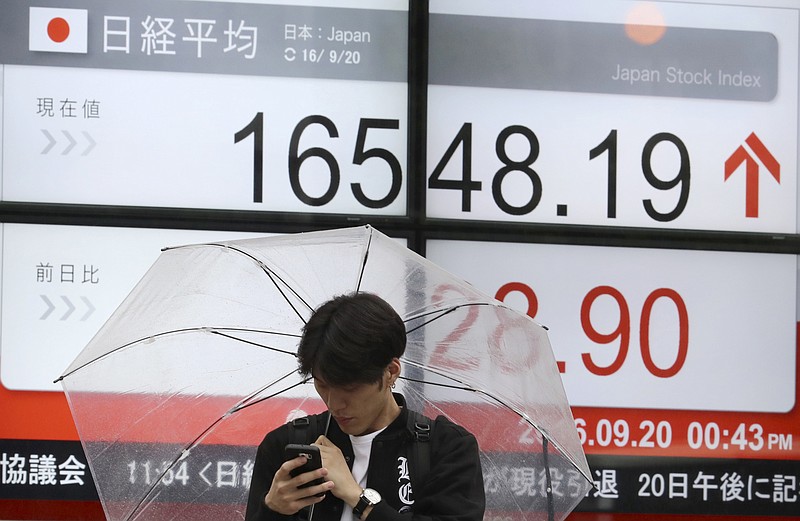TOKYO (AP) - Japan's central bank decided Wednesday to keep its monetary easing strategy mostly as is, while adjusting its asset purchases to push yields on long-term government bonds higher.
The technical adjustments to the Bank of Japan's policies were widely expected, though many analysts had expected an interest rate cut or other more aggressive action. The meeting wrapped up just hours before the U.S. Federal Reserve's latest policy decision was due. Economists expect the Fed to leave rates unchanged when it ends its two-day meeting Wednesday.
The Bank of Japan's policy statement said its short-term policy rate will remain at negative 0.1 percent. The central bank is charging that rate on excess reserves it holds for banks to encourage them to lend more and said it might cut it further.
But the central bank will seek to push yields on longer-term securities higher. That would be a boon to life insurance companies and other institutional investors: in reaction to the BOJ decision share prices jumped 1.7 percent Wednesday.
The "new framework" to strengthen monetary easing commits the Bank of Japan to pushing past the 2 percent inflation target it set more than three years ago.
The central bank said it will continue to purchase assets like government bonds at a rate of about 80 trillion yen ($787 billion) a year. The purchases are intended to keep yields on 10-year government bonds at about zero.
The Bank of Japan issued a 61-page assessment that said its "quantitative and qualitative easing," monetary policy, known as QQE, had succeeded in ending deflation, or falling prices. But it said that fostering "inflation expectations" that might encourage consumers and businesses to spend more was taking time.
"With regard to the outlook, sluggishness is expected to remain in exports and production for some time, and the pace of economic recovery is likely to remain slow," it said.
The world's other major central banks have spent years struggling to rejuvenate their economies, to raise inflation and get businesses and consumers to spend more.
In the United States, the Federal Reserve is expected to raise short-term U.S. interest rates - but probably not before a meeting in December.
In December 2015, the U.S. central bank raised rates for the first time since 2006. It was widely expected to hike rates several more times this year, has held off as the U.S. economy sputtered, hobbled by weak global growth and a strong dollar that makes American goods pricier in foreign markets.
Meanwhile, European Central Bank chief Mario Draghi is asking for help from the governments of the 19 counties that use the euro currency. The ECB on Sept. 8 left its aggressive stimulus measures unchanged. It called on European governments to spend more on infrastructure projects and to enact reforms to make their economies more efficient and business-friendly.
__
AP Economics Writer Paul Wiseman in Washington, D.C., contributed to this report.
__
Follow Elaine Kurtenbach:
www.twitter.com/ekurtenbach
http://bigstory.ap.org/content/elaine-kurtenbach
